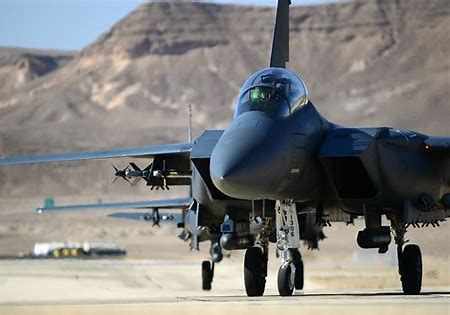
In a decisive move by Congress, an amendment to the 2025 National Defense Authorization Act is set to bolster the United States Air Force’s capability with additional F-15EX Eagle II fighter jets.

As global tensions escalate, lawmakers have taken a firm stance on maintaining a robust and versatile air force. The proposal mandates an increase in the fleet from the current target of 98 to 122 aircraft, which although falls short of the initial aim for 144 jets, reflects a clear commitment to adaptability and strength in aerial warfare.

This strategic push comes on the heels of heightened concerns around the premature closure of the F-22 Raptor production line and its resultant operational challenges.

The F-15EX, a formidable aircraft capable of reaching Mach 2.5 and carrying 30,000 pounds of munitions, provides a multi-role capability that complements the technologically advanced F-35 and F-22 fighters, enabling them to focus on the most critical tasks.

Congress’s involvement signals an understanding of the long-term threats facing the nation and underscores the necessity for a diverse and comprehensive air combat fleet.

“Although it might sound strange that Congress, which is the approver of military funds, is forcing the Air Force to spend more money on a capability, this is the way the American democracy works, and it generally works well because Congress has a better view of long-term threats than the Air Force, which is focused on its turf,” an acknowledgment of the complex dynamics at play between military needs and democratic oversight.

The F-15EX Eagle II, not a newcomer to the skies but a seasoned air superiority jet with an exceptional track record, originally catered to the needs of U.S. allies in the Middle East.

Enhanced versions, the F-15SA for Saudi Arabia and F-15QA for Qatar were developed through collaborative funding and upgrades, providing the groundwork for the U.S. Air Force’s interest in this advanced iteration.

Simultaneously, the National Guard Bureau has voiced its appeal to Congress, seeking to add six F-35s and six F-15EXs into the fiscal 2025 budget, reflecting a priority to modernize and secure the Air National Guard’s capabilities.

The request includes a substantial investment aimed at completing a planned procurement and constructing a sustainable fleet of combat squadrons, indicative of the Guard’s significant role in the overall defense strategy, particularly in the Indo-Pacific theater.

While the Air Force has intended the F-15EX as an interim solution to the F-35 production delays, the political momentum now seems to be shifting towards ensuring the F-15EX is a permanent fixture in America’s aerial arsenal.

As indicated by a draft version of the NDAA, the House Armed Services Committee is taking steps to slow down the retirement of F-15E Strike Eagles, adding financial provisions for more F-15EXs in 2026.

This legislative proposal is a response to the Air Force’s plans to reduce the number of F-15E Strike Eagles, an aircraft that has proven its worth in recent combat operations, such as the downing of numerous Iranian drones threatening Israel.

The Strike Eagle’s advanced capabilities, including the new AN/APG-82(V)1 AESA radar and the Eagle Passive Active Warning and Survivability System (EPAWSS), contribute to its continued relevance in modern aerial combat.

Despite the Air Force’s rationale to pivot resources towards NGAD and other modernization initiatives, Congress is expressing caution, emphasizing the importance of maintaining a substantial number of tactical aircraft to meet the immediate needs of combatant commanders.
Relevant articles:
– Is Congress Forcing the F-15EX Fighter on the U.S. Air Force?, The National Interest
– Guard Asks Congress to Add F-15EX, F-35 Fighters Back to Budget, Air & Space Forces Magazine
– House Defense Bill Would Slow F, Air & Space Forces Magazine
– Move To Block F-15E Strike Eagle Cuts Being Made In Congress, The War Zone

